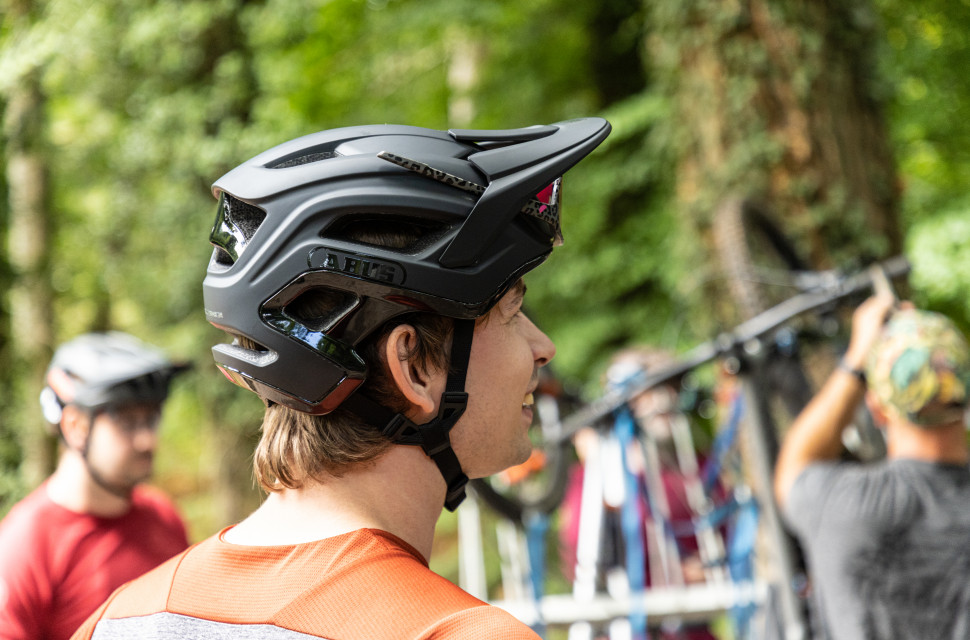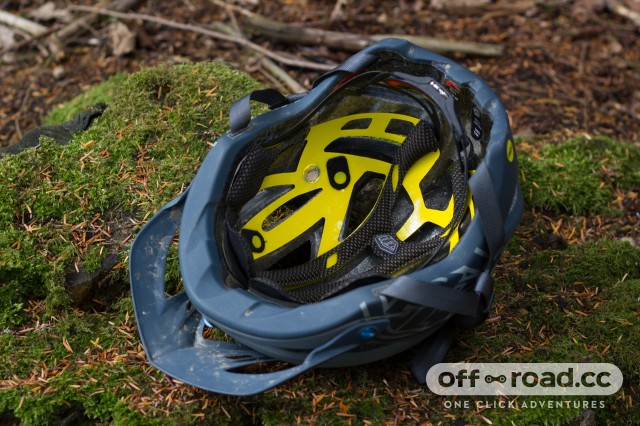When should you replace your bicycle helmet?

Riding with a helmet is imperative – if you own a bike, you should own a bicycle helmet, too. That's because, without it, you'll be opening yourself up to easily avoidable injury and possibly even death. Even the best mountain bike helmets need to be replaced over time due to the degradation of polystyrene foam. We asked some industry pros to debunk some myths about your gravel and mountain bike helmet.
- The best mountain bike trail and enduro helmets - tried, tested and reviewed
- Buyer's guide to mountain bike helmets: get the best bike helmet for you
- What is a Mips helmet?
We quizzed them on the most common ideas, questions and misconceptions to find out how often you should change your helmet and why.
Do you need to change your helmet after a certain amount of time, even if you haven't had a crash?
Yes, but that's not necessarily because the expanded polystyrene foam degrades over time, as April Beard, Bontrager's product manager for helmets, explains: "It really depends on how good of care you take of the helmet. There is no evidence that the EPS liner will deteriorate from age. Still, there are things such as solvents, chemicals and environmental exposure that can degrade the performance of the helmet."
Paul Caswell, the senior brand manager for Giro and Bell helmets' distributor ZyroFisher agrees: "We normally recommend a new lid every three years depending on usage as even with no impacts there is a constant knocking and pressing of the EPS as the helmet is stored, dropped, placed on hard surfaces etc. Due to tiny impact after tiny impact over time, the EPS will gradually lose its volume making it less able to deal with the energy in the unfortunate event of an impact. Of course, the more the helmet is used, the more it will deteriorate, so one rule for all does not work here, but three years is a good guide."
Helmets.org, a non-profit consumer-funded program providing information about bicycle helmets, largely backs up the manufacturer's stance. They cite data from an MEA Forensic study in 2015 that found that the foam liners of used but not crashed helmets retained their performance over many years, with some of the helmets tested being 26 years old.
The Snell Motorcycle Foundation has a slightly different stance, saying that "glues, resins and other materials used in helmet production can affect liner materials. Hair oils, body fluids and cosmetics, as well as normal "wear and tear" all contribute to helmet degradation."
That leads them to recommend a five-year helmet replacement period, partly because their experience is that noticeable improvement in the protective characteristic of helmets due to advances in materials, designs and production methods.
Paul adds: "I see cyclists wearing helmets that are clearly over a decade old and well-worn which makes me cringe as they are just not thinking about their own safety, which is obviously paramount."
Should you change your lid after a small tumble, even if you didn't hit it hard and there's no sign of damage?
You've had a small over bars and tumbled off the bike, hitting your head but not very hard. The helmet isn't broken and the shell looks fine – so surely it's okay to keep using it? That's a mistake, according to Giro/Bell's Paul: "Damage to the EPS or EPP is not always visible, the outer polycarbonate shell may only show a small scuff or mark, but if the EPS layer inside is compromised in any way this may reduce the ability of the helmet to manage impact energy."
April at Bontrager concurs: "Sometimes the damage to the EPS is not visible from what we can see of the helmet. If any amount of the EPS was crushed from the impact it cannot spring back to its original form, meaning that it cannot absorb the energy from a second impact, therefore needing to be replaced."
It's not just the EPS foam that can get damaged in a minor crash. You should also think about the integrity of the rest of the helmet, as Paul explains: "Think about the straps and fit system too, both elements are critical to securing the helmet properly on your head and there can be no risks taken with potentially hidden damage to these parts too."
The advice from Helmets.org tallies with that, but they make an important point: "Bear in mind that if the helmet did its job most people would tell you that they did not even hit their head, or did not hit their head that hard."
That means that the fact you only felt a minor bump might have hidden what was quite a serious blow. Anyway, as most helmet manufacturers offer discounted crash replacement schemes – Giro, Bell and Bontrager included - it makes good sense to err on the side of caution when it comes to something as important as this.
What are the signs that a helmet is compromised, visually or otherwise?
Regular inspection of your helmet for damage is a pretty sensible thing to do but what exactly should you be looking out for? It's all fairly obvious stuff, according to Paul: "Any exposed EPS can start to look chipped or worn. If the polycarbonate shell shows a dent of any sort then replace it. Also, people think a small piece missing from the edge of the helmet is not important but again there may be hidden damage to the construction of the helmet. Look inside the vents for any cracks or splitting in the EPS. Also if the polycarbonate shell is separating from the EPS that means it's time to change, too."
April's advice mirrors that, adding that it's best to consult your dealer if you are not sure if the helmet is damaged as they will be able to give it a thorough inspection for you.
The Helmets.org page also has a guide to inspecting your helmet, which is well worth a read if you're unsure.
How should you treat your helmet to get the longest and safest use of it?
There are many things you can do to maximise the lifespan of your helmet with the most important being protection from bumps and bangs wherever possible. Instead of slinging it in the back of the car to bounce around with the rest of your kit, consider popping it in a padded bag or similar.
April at Bontrager adds: "Keep your helmet clean. If you would like to wash it, you can wash it with a solution of mild soap and water. (Don’t put it in the dishwasher.) The fit pads are machine washable in cold temp, gentle cycle. Don’t put it in the dryer. Store it in a dry and cool environment out of sunlight, and avoid storage in extreme temperatures: high heat and humidity, extreme cold. Avoid dropping or throwing it around. Avoid solvents/sprays/chemicals coming in contact with the helmet."
Paul's advice mirrors that but suggests that you should replace the pads before you replace the helmet: "Replace the pads as often as you can, primarily for safety reasons as the pads secure the helmet in the correct position on the head ensuring the maximum coverage and safety, however, there is also comfort and even hygiene to think about."
"Do not expose to any sort of solvent and beware of insect repellents, in particular, those that contain DEET as certain chemicals can compromise the look or construction of the helmet."
When it comes to helmets that use a Mips liner, April has the following advice: "The Mips liner should not be removed or tampered with. If you would like to clean it, you can wash it with a solution of mild soap and water, without removing it from the helmet. If any part of the MIPS system breaks you should replace the helmet."
We'll finish on the following comment from Paul: "Cyclists seem happy to spend £1,000s on carbon wheels or bars to save a few grams but a new helmet could save your life, plus new designs are more aero, lighter and the fuller coverage means it is safer too... no excuses."














